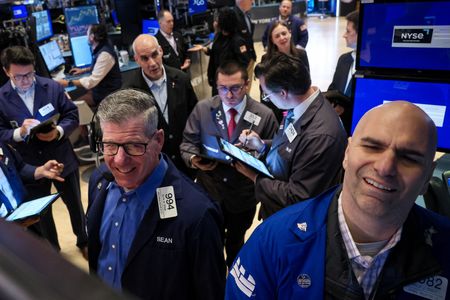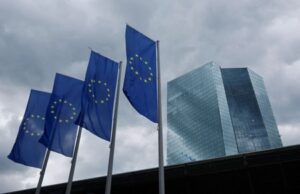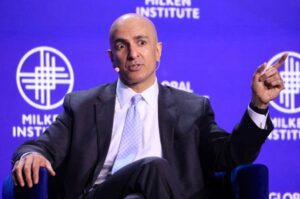By David Randall
NEW YORK (Reuters) – The typical summer slowdown in U.S. stock markets may be more pronounced this year with inflation jitters and an early presidential debate that have the potential to weigh on a rally that has pushed the S&P 500 near record highs in recent months.
The S&P 500 is up nearly 12% this year on strong earnings and signs inflation may be falling enough for the Federal Reserve to cut benchmark interest rates, but that rally is unlikely to continue in the months ahead, investors said.
Summer has historically been the slowest season for U.S. stocks. The benchmark S&P 500 has risen 56% of the time between June through August, according to data from CFRA Research dating back to 1945. Traders on vacation and investors waiting for fall corporate earnings before committing to next year’s asset allocations are often cited as reasons for the summer doldrums.
This summer brings extra headwinds, though, with ongoing uncertainty over the timing of rate cuts and the unknowns of the U.S. presidential election expected to drive some choppiness.
“Markets are pretty richly valued at this point, and everything has to go right between now and July for the Fed to deliver any interest rate cuts,” said Sameer Samana, senior global market strategist at the Wells Fargo Investment Institute.
“We don’t see a lot of potential catalysts for more gains, so there’s a good chance that the seasonal slowdown we typically see will be turbocharged this year.”
Inflation data will be the key driver of the market for the rest of the year, determining the path of Treasury bond yields and their relative attractiveness compared with stocks.
The S&P 500 is currently trading at a forward price-to-earnings ratio of 21.6 compared with roughly 17.5 in October when 10-year Treasury yields hit near two-decade highs.
Hotter-than-expected inflation data early this year dampened expectations for Fed rate cuts in 2024, pushing yields broadly higher. Then a dip in the rate of price increases in April was widely seen as giving the Fed cover to ease, with the market now pricing in a 35 basis point cut by the end of December.
But another hot reading in June or July could dash those hopes. The next personal consumption expenditures report is expected on Friday, while the next consumer price index report is expected on June 12.
“The real challenge will be on the relative side. If yields were to spike and if it looks like the Fed isn’t going to cut, then investors will move into bonds and cash,” said Ed Clissold, chief U.S. strategist at Ned Davis Research.
At the same time, global fund managers have their highest stock allocation since January 2022, according to BofA Global Research. “When everybody is long, there’s nobody left to buy,” said Giuseppe Sette, president of market-research firm Toggle.
TIGHT RACE
This year’s election race between President Joe Biden, a Democrat, and Republican former President Donald Trump is another unknown.
The S&P 500 has advanced between Memorial Day and Labor Day 75% of the time when a first-term president is running for reelection, said Sam Stovall, chief investment strategist at CFRA Research. But this year’s race is extremely tight with Biden largely tied with Trump in national opinion polls.
The pair have also agreed to a June 27 debate. That would mark the earliest-ever general election debate in a presidential race, focusing investor attention on the potential outcome and policy implications of the race much earlier than usual.
“This looks like it will be a fairly tight presidential election, so getting some kind of pullback as investors move to the sidelines is quite possible,” said Clissold.
(Reporting by David Randall; editing by Michelle Price and Jonathan Oatis)





